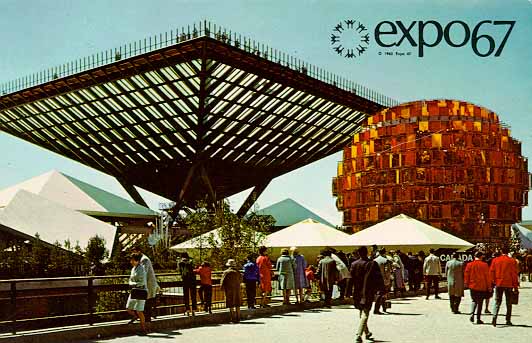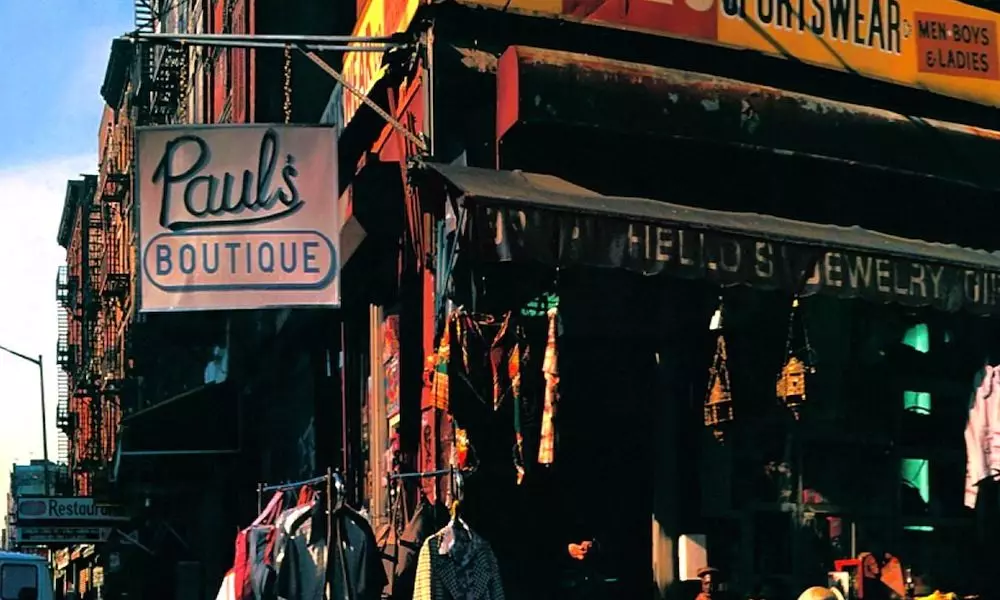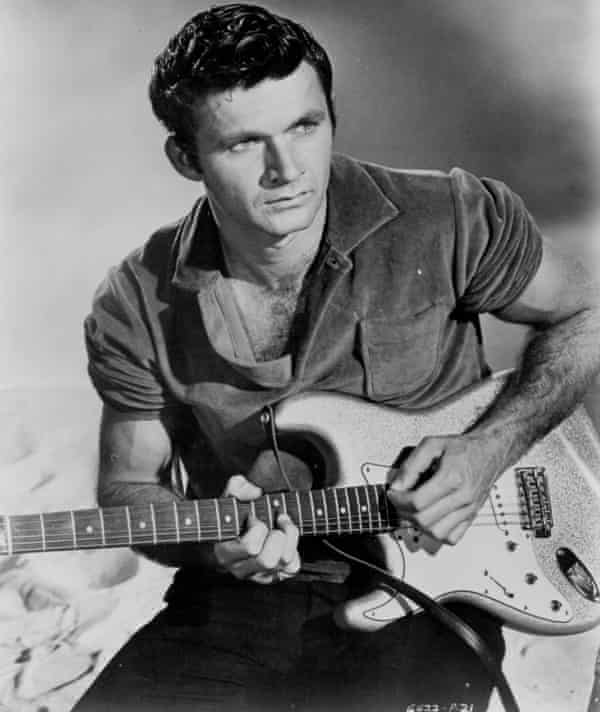The TV Show . . .
The lead character was handsome, dashing, and consistently well-dressed in tailored suits, which never seemed to wrinkle even after the usual scuffles with the bad guys.
Edwards clearly modelled the character of Peter Gunn on Cary Grant, considered one of Hollywood’s most debonair leading men at the time. The actor chosen to play Gunn, Craig Stevens, even bore a close resemblance to Grant.
The series was set in Los Angeles (although the actual city was never mentioned by name in the series) and, more often than not, inside a jazz club called Mother’s.
The storyline essentially centred around Gunn solving his client’s problems (for which he charged $1000 a case), which always involved having to deal with an assortment of hitmen, hoodlums and assorted “hip” characters found on the jazz scene.
To get a feel for the show that inspired the music, here is Episode 1, Season 2 of the Peter Gunn television series.
During the 1980s the Peter Gunn show was revived for television in 1989. A long-gestating ABC 90-minute pilot, Peter Gunn aired in April 1989 with Peter Strauss in the lead role that was written, produced, and directed by Blake Edwards, but the network failed to order a series despite strong ratings and reviews. Take a look at the promo spot for the TV series, pay attention the very 1980s aesthetic.
The Art Of Noise
Although I've loved this song and video by the Art of Noise, it took about 30 years for me to recognize Rik Mayall as the star of this video. Rik and his friends such as great British comedians Adrian Edmondson, Jennifer Saunders, Dawn French, Alexei Sayle, Peter Richardson and Nigel Planer were seen on television screens in Britain and enjoyed immense success.
A rare appearance of both Duane Eddy and the Art of noise from their 1986 appearance on the British TV show "the Tube". BTW, Duane Eddy is still alive and kicking at age 82.
Blues Brothers
Originally performed for the seminal Blues Brothers movie, we catch the original members of the Blues Brothers band in a 1992 concert.
The Cramps
No collection of Peter Gunn videos would be complete without an entry featuring the Cramps lead guitarist Poison Ivy. She was the foremost female guitarist of the 1980s that left any mark on the alternative music world.
Cherry Wainer
Perhaps my all-time favourite version of the Peter Gunn theme is by the husband and wife duo of Cherry Wainer with Don Storer. This clip is from a German TV show during the mid 1960s. Cherry is so fun to watch. Clearly she loved to be on camera and to perform!
ELP (Emerson,Lake and Palmer)
While not taken from the 1977 Montreal concert where their live album was recorded, you still get a sense of their appreciation for the Classic Peter Gunn Theme. Emerson, Lake and Palmer opened their shows with the Peter Gunn theme as means of cheesing up the audience for what was to come during the rest of the concert.
Altec Lansing "Voice of the Theatre" Speakers
The speakers used to create the fabulous echo and reverse on the original Peter Gunn recordings were the classic -industry standard - Altec Lansing A-700 and A5 VOTT (Voice of the Theatre) Speakers. Read on for a look into the company, their speakers and the importance and impact they had on the music and film industries.
Altec Lansing, Inc. is a U.S. audio electronics company founded in 1927. Their primary products are loudspeakers and associated audio electronics for professional, home, automotive and multimedia applications.
Engineers at Western Electric, who later formed Altec Services Company, developed the technology for motion picture sound that was introduced in 1927, with the release of The Jazz Singer. Originally, Altec Services Company serviced the theatre sound systems the company founders had helped develop. In 1941 the Altec Services Company purchased the nearly bankrupt Lansing Manufacturing Company and melded the two names, forming the Altec Lansing Corporation, and with the manufacturing capabilities of the former Lansing Manufacturing Company, they quickly expanded into manufacturing horn loudspeakers.
For a really good look at the design and impact of the Voice of the Theatre Speaker History check out this link. Although the article can get a little technical, the author does a good job of presenting the reasons why the technology became a standard in the audio world.
The "Peter Gunn" Guitar
The Bob Bain story is an extremely long and varied one, detailed in this great article over at "Vintage Guitar" magazine. The Bob Bain Story.
Take the time to glance at the custom The Peter Gunn Guitar over at the Fender guitars page to see a photo of the original and some technical info about the limited edition reproduction guitar.
Playlists
 Perhaps the most telling statistic I’ve come across about disco and more specifically about the Montreal disco scene was that the police reported in 1970 that 80% of Montreal’s missing young people could be found in discothèques.
Perhaps the most telling statistic I’ve come across about disco and more specifically about the Montreal disco scene was that the police reported in 1970 that 80% of Montreal’s missing young people could be found in discothèques.
During the 70s, for some people, disco was all empty glitz and glamour, smoke and mirrored balls and the pinnacle of 70s exhibitionism. Montreal exemplified those qualities during a time when the the city’s greatness was dissolving after reaching its high watermark during Expo 67. Moreover, disco’s origins were far grittier than the slick veneer of the well know Studio 54. Before your mom was doing the YMCA at weddings, disco was the beating heart of the Montreal underground. It was the music of liberation, inclusiveness and empowerment with a four-on-the-floor bassline as its rallying cry.
Expo 67
In1967 the world came to Montreal for Canada's Worlds Fair. Read about the event and its impact on the city of Montreal and the explosion of cultural awareness that helped usher in the disco era.
Disco TV Shows
Check out this clip of CFCF Montreal's CTV network show "Feel Like Dancin'"from 1977! They were actually pretty cutting edge . . . In this episode they introduce Grave Jones.
Disco Life
If you really want to get a look at the extravagance of the Disco era take a look at these pictures That Show Just How Crazy 1970s Disco Really Was.
Spotify Playlist
Apple Music Playlist
In this episode we examine all 17 samples from the Beastie Boys "Hey Ladies" and get a feel for where the samples lived prior to being used by the Beastie Boys. While most cuts are readily available digitally, several took some deep diving at the used record stores in my area in order to get copies that could be digitized for the show.
If you’re like me, you expected the Beastie Boys second album, 1989’s Paul’s Boutique, to be filled with the same misogynistic lyrics and odes to frat boy parties as their freshman output Licensed to Ill. Surprisingly, their departure from Def Jam records and Rick Rubin’ s production influence, may just have been their saving grace.
While Rubin’s influence extends to nearly every aspect of Licensed to Ill, it was still the perfect musical foil for the Bestie Boys. Problems arose however, when critics started referring to the band in the same context as the 1960’s TV show band the Monkeys. Could they really play any instruments? Were they just a culmination of studio production talent? Moreover, many a critic likened their cultural appropriation and plundering of black music to that of the Blues Brothers and the money train which followed them through the 1980s.
The video for "Hey Ladies" also deserves a viewing as it is quite humorous in its own right.
Samples
- "Come Let Me Love You (Instrumental)" by Jeanette "Lady" Day
- "Machine Gun" by Commodores
- "Magilla Gorilla" by Hoyt Curtin
- "Holy Ghost" by Bar-Kays
- "Ain't It Funky Now" and "Funky President (People It's Bad)" by James Brown
- "Hey DJ" by World's Famous Supreme Team
- "The Ballroom Blitz" by Sweet
- "Shake Your Pants" by Cameo
- "Jungle Boogie" by Kool & the Gang
- "So Ruff, So Tuff" by Roger
- "Party Time" by Kurtis Blow
- "Pumpin' It Up (Special Club Mix)" by P-Funk All Stars
- "Jazzy Sensation" by Afrika Bambaataa and The Jazzy 5
- "High Power Rap" by Crash Crew
- "Change the Beat (Female Version)" by Beside
- "Hush" by Deep Purple
References
The lyrics for "Hey Ladies" are rife with timeless references to pop culture. However, for those not old enough to remember or quite frankly you may have forgotten here is a list.
- Saduhara Oh - great Japanese baseball player
- "Take my advice at any price a gorilla like..." - from Magilla Gorilla theme song (actual lyrics "a gorilla like Magilla is mighty nice")
- Tom Thumb
- Tom Foolery - acting in a foolish manner
- Chuck Woolery - host of TV’s Love Connection
- Welcome Back Kotter
- James at 15 - Lance Kerwin TV show from late 70s
- Chachi in Charge - a reference to Scott Baio’s character in Happy Days, and his show "Charles in Charge"
- "Tune In, Turn On" - (Drop Out) - popular phrase in 60’s by Dr. Timothy Leary
- "Vincent Van Gogh - Famous painter, who mailed his severed ear to his girlfriend to show how much he loved her
- Tom Cushman is a nationally syndicated sportswriter
Listen to our Playlist
In this episode of the Buster Mungus Diaries I take a look at 4 of my favourite live recordings of all-time.
The albums are fabulous in their own right, but they do provide a glimpse at musicians/bands when the material is paired with great engineering and a fantastic performance. Consider the variety and range of performances by the likes of, Jerry Lee Lewis, The MC5, Deep Purple and the Allman brothers Band.
I grew up during the decade of the live album. As an Artist you were nobody until you had a live album in late 1960s into the late 1970s. It announced your triumphs over the previous album releases and marked your maturity as an artist, usually with a multi gate fold, poster sometimes included, double LP.
Jerry Lee Lewis
Jerry Lee Lewis (born September 29, 1935) is an American rock and roll and country music singer and pianist. An early pioneer of rock and roll music, Lewis was inducted into the Rock and Roll Hall of Fame in 1986 and his pioneering contribution to the genre has been recognized by the Rockabilly Hall of Fame. In 2004, Rolling Stone Magazine ranked him number 24 on their list of the 100 Greatest Artists of All Time.
The MC5
MC5 was an American rock band from Lincoln Park, Michigan, formed in 1964. The original band line-up consisted of vocalist Rob Tyner, guitarists Wayne Kramer and Fred "Sonic" Smith, bassist Michael Davis, and drummer Dennis Thompson. MC5 was listed by VH1 as one of the most important American hard rock groups of their era. Their three albums are regarded by many as classics, and their song "Kick Out the Jams" is widely covered.
Someone in the studio (with the initials W.K.) got tired of watching "KOTJ" being taught incorrectly on YouTube. So, on a challenge, that same complainer taught our "resident youth" William Olivas to play it correctly. If William can do it, anyone can. And now you can, too. Finally! Now, once more, with feeling...
Deep Purple
While Deep Purple have been copied and imitated by many artists and bands throughout the years, none have captured the essence and feel of the Mark II lineup.
| Mark IIa (July 1969 – June 1973) |
|
|---|
This lineup is considered the "Gold Standard" among longtime fans of the band. The Mark II produced two of the 1970s greatest albums, "Machine Head" and our pick, "Made in Japan"
The Allman Brothers Band
While some of the greatest live performances during a bands history are never recorded on audio tape of film, sometimes we get lucky and find the next best the next best thing. Most of the early film of the band live is either from super 8 film of just plain horrible quality due to low light levels, there are a few worth watching. In this clip 1971, Duane and Dicky illustrate their guitar prowess without walking over each other. Moreover Dickey hasn't yet entered his "I'll play as loudly as I want to" phase so there is some noted restraint while playing in the shadow of the great Duane Allman.
In this episode we take a look at the history of one of the most recognized and widely covered surf songs -- Misirlou.
Dick Dale
Taken from the film "A Swingin Affair" released in 1963. The band also performs another tune in the film but its not as good.
Spliced together from clips taken from the movie "Pulp Fiction" this version is sonically the same, simply using the originally recorded studio track and setting it to the film clips.
We trace the song from its origin as a middle eastern folk song in the 1920's through to its re-invention as a modern day surf classic from Dick Dale, to its impact on cinema goers as the theme song for Quentin Tarantino's 1994 film Pulp Fiction.
Learn to Play Misirlou
In this short clip you'll learn the basics of how to play the classic on the electric guitar.
In this Misirlou guitar lesson, I will show you to play this Dick Dale classic note-for-note.
We will be using standard tuning. The most obvious technique used by Dick Dale throughout "Misirlou" is the rapid fire tremolo picking. In order to accomplish this and also make the guitar tone brighter, he chose to pick very close to the bridge.
Picking very close to the bridge makes the string feel tighter, which in turn can make it a bit easier to rapidly pick the string.
You will need a lot of endurance to make it through the entire song. The most important thing to remember is to try and keep your right hand wrist and forearm as relaxed as possible. That is very difficult to do because the picking is almost non-stop. "Misirlou" is a great exercise in staying relaxed during fast picking passages.
There is also a short chord section where the guitar takes a rhythm guitar approach underneath a trumpet solo. I will show you the chords used during this section of the song and it gives a chance for you to relax your picking hand a bit.
So I hope you enjoy learning this surf rock guitar workout!
Carl...
















Social Media
Search Here